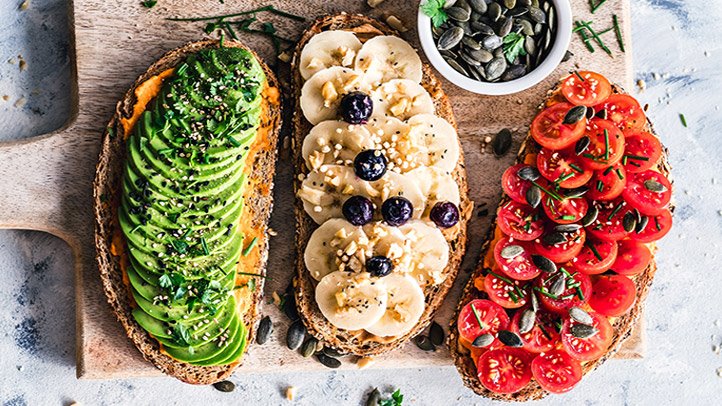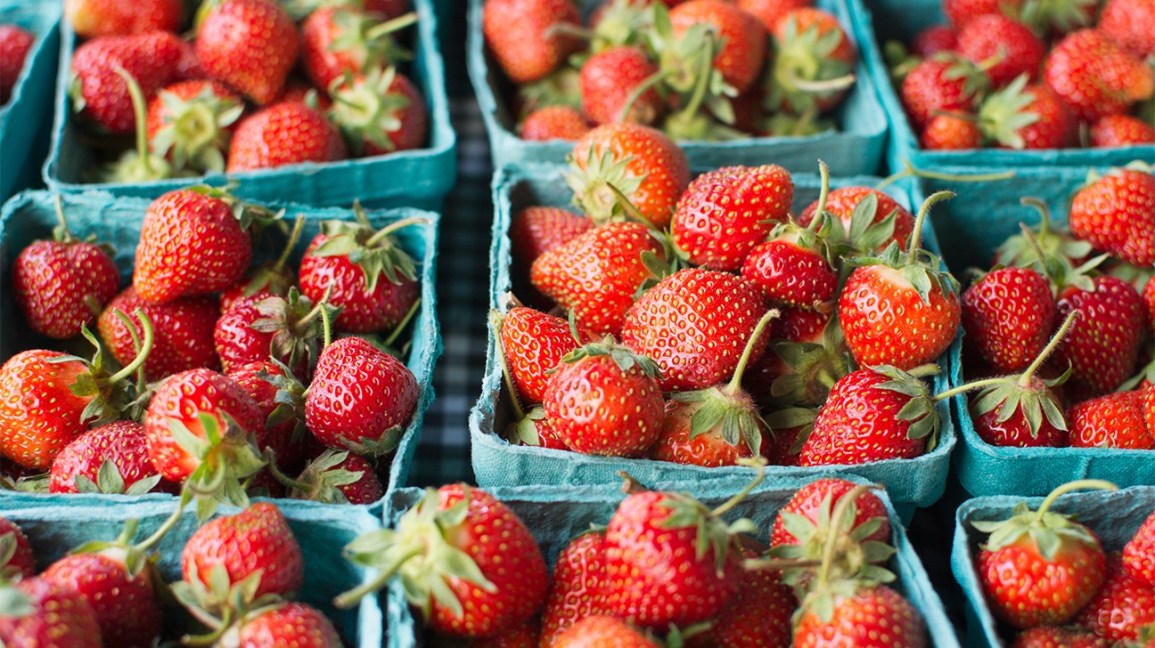There are many arguments about which diet is best for you.
Nevertheless, health and wellness communities agree that diets emphasizing fresh, whole ingredients and minimizing processed foods are superior for overall wellness.
The whole-foods, plant-based diet does just that.
It focuses on minimally processed foods, specifically plants, and is effective at stimulating weight loss and improving health.
This article reviews everything you need to know about the whole-foods, plant-based diet, including its potential health benefits, foods to eat and a sample meal plan.
What Is a Whole-Foods, Plant-Based Diet?
There is no clear definition of a what constitutes a whole-foods, plant-based diet (WFPB diet). The WFPB diet is not necessarily a set diet — it’s more of a lifestyle.
This is because plant-based diets can vary greatly depending on the extent to which a person includes animal products in their diet.
Nonetheless, the basic principles of a whole-foods, plant-based diet are as follows:
- Emphasizes whole, minimally processed foods.
- Limits or avoids animal products.
- Focuses on plants, including vegetables, fruits, whole grains, legumes, seeds and nuts, which should make up the majority of what you eat.
- Excludes refined foods, like added sugars, white flour and processed oils.
- Pays special attention to food quality, with many proponents of the WFPB diet promoting locally sourced, organic food whenever possible.
For these reasons, this diet is often confused with vegan or vegetarian diets. Yet although similar in some ways, these diets are not the same.
People who follow vegan diets abstain from consuming any animal products, including dairy, meat, poultry, seafood, eggs and honey. Vegetarians exclude all meat and poultry from their diets, but some vegetarians eat eggs, seafood or dairy.
The WFPB diet, on the other hand, is more flexible. Followers eat mostly plants, but animal products aren’t off limits.
While one person following a WFPB diet may eat no animal products, another may eat small amounts of eggs, poultry, seafood, meat or dairy.
SUMMARY
The whole-foods, plant-based diet emphasizes plant-based foods while minimizing animal products and processed items.
It Can Help You Lose Weight and Improve Your Health
Obesity is an issue of epidemic proportions. In fact, over 69% of US adults are overweight or obese.
Fortunately, making dietary and lifestyle changes can facilitate weight loss and have a lasting impact on health.
Many studies have shown that plant-based diets are beneficial for weight loss.
The high fiber content of the WFPB diet, along with the exclusion of processed foods, is a winning combination for shedding excess pounds.
A review of 12 studies that included more than 1,100 people found that those assigned to plant-based diets lost significantly more weight — about 4.5 pounds (2kg) over an average of 18 weeks — than those assigned to non-vegetarian diets.
Adopting a healthy plant-based eating pattern may also help keep weight off in the long run.
A study in 65 overweight and obese adults found that those assigned to a WFPB diet lost significantly more weight than the control group and were able to sustain that weight loss of 9.25 pounds (4.2kg) over a one-year follow-up period.
Plus, simply cutting out the processed foods that aren’t allowed on a WFPB diet like soda, candy, fast food and refined grains is a powerful weight loss tool itself .
SUMMARY
Many studies have demonstrated that whole-food, plant-based diets are effective for weight loss. They may also help you maintain weight loss in the long run.
It Benefits a Number of Health Conditions
Adopting a whole-foods, plant-based diet not only benefits your waistline, but it can also lower your risk and reduce symptoms of certain chronic diseases.
Heart Disease
Perhaps one of the most well-known benefits of WFPB diets is that they are heart-healthy.
However, the quality and types of foods included in the diet matter.
A large study in over 200,000 people found that those who followed a healthy plant-based diet rich in vegetables, fruits, whole-grains, legumes and nuts had a significantly lower risk of developing heart disease than those following non-plant-based diets.
However, unhealthy plant-based diets that included sugary drinks, fruit juices and refined grains were associated with a slightly increased risk of heart disease.
Consuming the right kinds of food is critical for heart disease prevention when following a plant-based diet, which is why adhering to a WFPB diet is the best choice.
Cancer
Research suggests that following a plant-based diet may reduce your risk of certain types of cancer.
A study in over 69,000 people found that vegetarian diets were associated with a significantly lower risk of gastrointestinal cancer, especially for those who followed a lacto-ovo vegetarian diet (vegetarians who eat eggs and dairy).
Another large study in more than 77,000 people demonstrated that those who followed vegetarian diets had a 22% lower risk of developing colorectal cancer than non-vegetarians.
Pescatarians (vegetarians who eat fish) had the greatest protection from colorectal cancer with a 43% reduced risk compared to non-vegetarians.
Cognitive Decline
Some studies suggest that diets rich in vegetables and fruits may help slow or prevent cognitive decline and Alzheimer’s disease in older adults.
Plant-based diets have a higher number of plant compounds and antioxidants, which have been shown to slow the progression of Alzheimer’s disease and reverse cognitive deficits.
In many studies, higher intakes of fruits and vegetables have been strongly associated with a reduction in cognitive decline.
A review of nine studies including over 31,000 people found that eating more fruits and vegetables led to a 20% reduction in the risk of developing cognitive impairment or dementia.
Diabetes
Adopting a WFPB diet may be an effective tool in managing and reducing your risk of developing diabetes.
A study in more than 200,000 people found that those who adhered to a healthy plant-based eating pattern had a 34% lower risk of developing diabetes than those who followed unhealthy, non-plant-based diets .
Another study demonstrated that plant-based diets (vegan and lacto-ovo vegetarian) were associated with nearly a 50% reduction in the risk of type 2 diabetes compared to non-vegetarian diets.
Plus, plant-based diets have been shown to improve blood sugar control in people with diabetes .
SUMMARY
Following a whole-foods, plant-based diet may reduce your risk of developing heart disease, certain cancers, cognitive decline and diabetes.
Adopting a Whole-Foods, Plant-Based Diet Is Good for the Planet
Switching to a plant-based diet not only benefits your health — it can help protect the environment, as well.
People who follow plant-based diets tend to have smaller environmental footprints.
Adopting sustainable eating habits can help reduce greenhouse gas emissions, water consumption and land used for factory farming, which are all factors in global warming and environmental degradation.
A review of 63 studies showed that the largest environmental benefits were seen from diets containing the least amount of animal-based foods such as vegan, vegetarian and pescatarian diets.
The study reported that a 70% reduction in greenhouse gas emissions and land use and 50% less water use could be achieved by shifting Western diet patterns to more sustainable, plant-based dietary patterns ).
What’s more, reducing the number of animal products in your diet and purchasing local, sustainable produce helps drive the local economy and reduces reliance on factory farming, an unsustainable method of food production.
SUMMARY
Plant-based diets emphasizing local ingredients are more environmentally friendly than diets that rely heavily on mass-produced animal products and produce.
Foods to Eat on a Whole-Foods, Plant-Based Diet
From eggs and bacon for breakfast to steak for dinner, animal products are the focus of most meals for many people.
When switching to a plant-based diet, meals should center around plant-based foods.
If animal foods are eaten, they should be eaten in smaller quantities, with attention paid to the quality of the item.
Foods like dairy, eggs, poultry, meat and seafood should be used more as a complement to a plant-based meal, not as the main focal point.
A Whole-Foods, Plant-Based Shopping List
- Fruits: Berries, citrus fruits, pears, peaches, pineapple, bananas, etc.
- Vegetables: Kale, spinach, tomatoes, broccoli, cauliflower, carrots, asparagus, peppers, etc.
- Starchy vegetables: Potatoes, sweet potatoes, butternut squash, etc.
- Whole grains: Brown rice, rolled oats, farro, quinoa, brown rice pasta, barley, etc.
- Healthy fats: Avocados, olive oil, coconut oil, unsweetened coconut, etc.
- Legumes: Peas, chickpeas, lentils, peanuts, black beans, etc.
- Seeds, nuts and nut butters: Almonds, cashews, macadamia nuts, pumpkin seeds, sunflower seeds, natural peanut butter, tahini, etc.
- Unsweetened plant-based milks: Coconut milk, almond milk, cashew milk, etc.
- Spices, herbs and seasonings: Basil, rosemary, turmeric, curry, black pepper, salt, etc.
- Condiments: Salsa, mustard, nutritional yeast, soy sauce, vinegar, lemon juice, etc.
- Plant-based protein: Tofu, tempeh, plant-based protein sources or powders with no added sugar or artificial ingredients.
- Beverages: Coffee, tea, sparkling water, etc.
If supplementing your plant-based diet with animal products, choose quality products from grocery stores or, better yet, purchase them from local farms.
- Eggs: Pasture-raised when possible.
- Poultry: Free-range, organic when possible.
- Beef and pork: Pastured or grass-fed when possible.
- Seafood: Wild-caught from sustainable fisheries when possible.
- Dairy: Organic dairy products from pasture-raised animals whenever possible.
SUMMARY
A healthy, WFPB diet should focus on plant foods like vegetables, fruits, whole grains, legumes, nuts and seeds. If animal products are eaten, they should be eaten in smaller quantities compared to plant foods.
Foods to Avoid or Minimize on This Diet
The WFPB diet is a way of eating that focuses on consuming foods in their most natural form. This means that heavily processed foods are excluded.
When purchasing groceries, focus on fresh foods and, when purchasing foods with a label, aim for items with the fewest possible ingredients.
Foods to Avoid
- Fast food: French fries, cheeseburgers, hot dogs, chicken nuggets, etc.
- Added sugars and sweets: Table sugar, soda, juice, pastries, cookies, candy, sweet tea, sugary cereals, etc.
- Refined grains: White rice, white pasta, white bread, bagels, etc.
- Packaged and convenience foods: Chips, crackers, cereal bars, frozen dinners, etc.
- Processed vegan-friendly foods: Plant-based meats like Tofurkey, faux cheeses, vegan butters, etc.
- Artificial sweeteners: Equal, Splenda, Sweet’N Low, etc.
- Processed animal products: Bacon, lunch meats, sausage, beef jerky, etc.
Foods to Minimize
While healthy animal foods can be included in a WFPB diet, the following products should be minimized in all plant-based diets.
- Beef
- Pork
- Sheep
- Game meats
- Poultry
- Eggs
- Dairy
- Seafood
SUMMARY
When following a WFPB diet, highly processed foods should be avoided and animal products minimized.
A Sample Meal Plan for One Week
Transitioning to a whole-foods, plant-based diet doesn’t have to be challenging.
The following one-week menu can help set you up for success. It includes a small number of animal products, but the extent to which you include animal foods in your diet is up to you.
Monday
- Breakfast: Oatmeal made with coconut milk topped with berries, coconut and walnuts.
- Lunch: Large salad topped with fresh vegetables, chickpeas, avocado, pumpkin seeds and goat cheese.
- Dinner: Butternut squash curry.
Tuesday
- Breakfast: Full-fat plain yogurt topped with sliced strawberries, unsweetened coconut and pumpkin seeds.
- Lunch: Meatless chili.
- Dinner: Sweet potato and black bean tacos.
Wednesday
- Breakfast: A smoothie made with unsweetened coconut milk, berries, peanut butter and unsweetened plant-based protein powder.
- Lunch: Hummus and veggie wrap.
- Dinner: Zucchini noodles tossed in pesto with chicken meatballs.
Thursday
- Breakfast: Savory oatmeal with avocado, salsa and black beans.
- Lunch: Quinoa, veggie and feta salad.
- Dinner: Grilled fish with roasted sweet potatoes and broccoli.
Friday
- Breakfast: Tofu and vegetable frittata.
- Lunch: Large salad topped with grilled shrimp.
- Dinner: Roasted portobello fajitas.
Saturday
- Breakfast: Blackberry, kale, cashew butter and coconut protein smoothie.
- Lunch: Vegetable, avocado and brown rice sushi with a seaweed salad.
- Dinner: Eggplant lasagna made with cheese and a large green salad.
Sunday
- Breakfast: Vegetable omelet made with eggs.
- Lunch: Roasted vegetable and tahini quinoa bowl.
- Dinner: Black bean burgers served on a large salad with sliced avocado.
As you can see, the idea of a whole-foods, plant-based diet is to use animal products sparingly.
However, many people following WFPB diets eat more or fewer animal products depending on their specific dietary needs and preferences.
SUMMARY
You can enjoy many different delicious meals when following a whole-foods, plant-based diet. The above menu can help you get started.
The Bottom Line
A whole-foods, plant-based diet is a way of eating that celebrates plant foods and cuts out unhealthy items like added sugars and refined grains.
Plant-based diets have been linked to a number of health benefits, including reducing your risk of heart disease, certain cancers, obesity, diabetes and cognitive decline.
Plus, transitioning to a more plant-based diet is an excellent choice for the planet.
Regardless of the type of whole-foods, plant-based diet you choose, adopting this way of eating is sure to boost your health.





